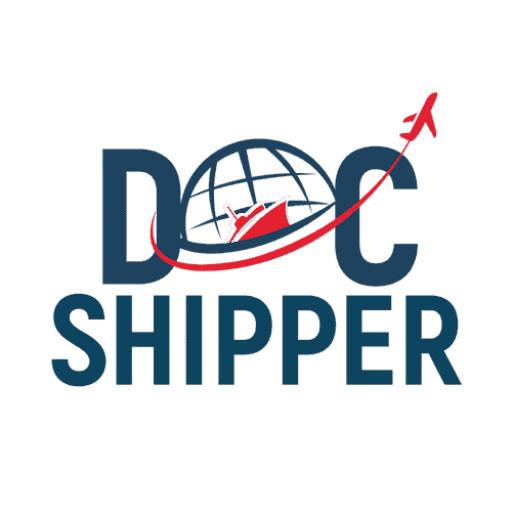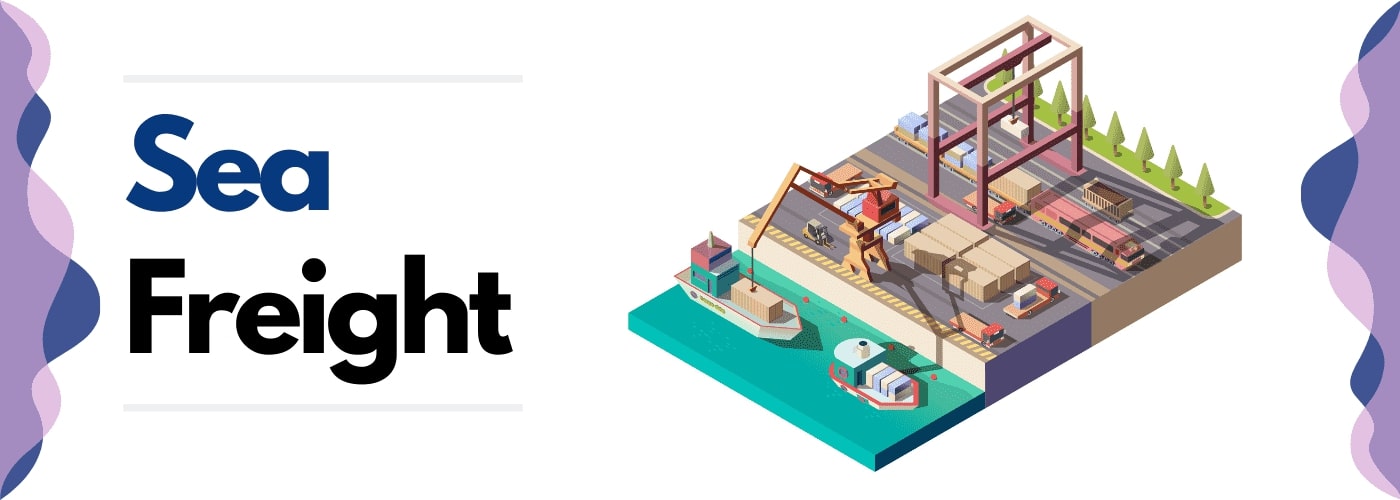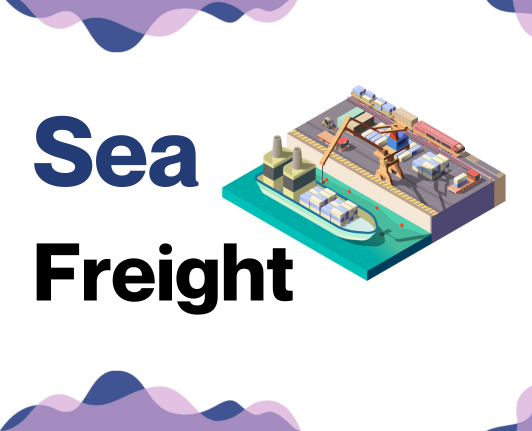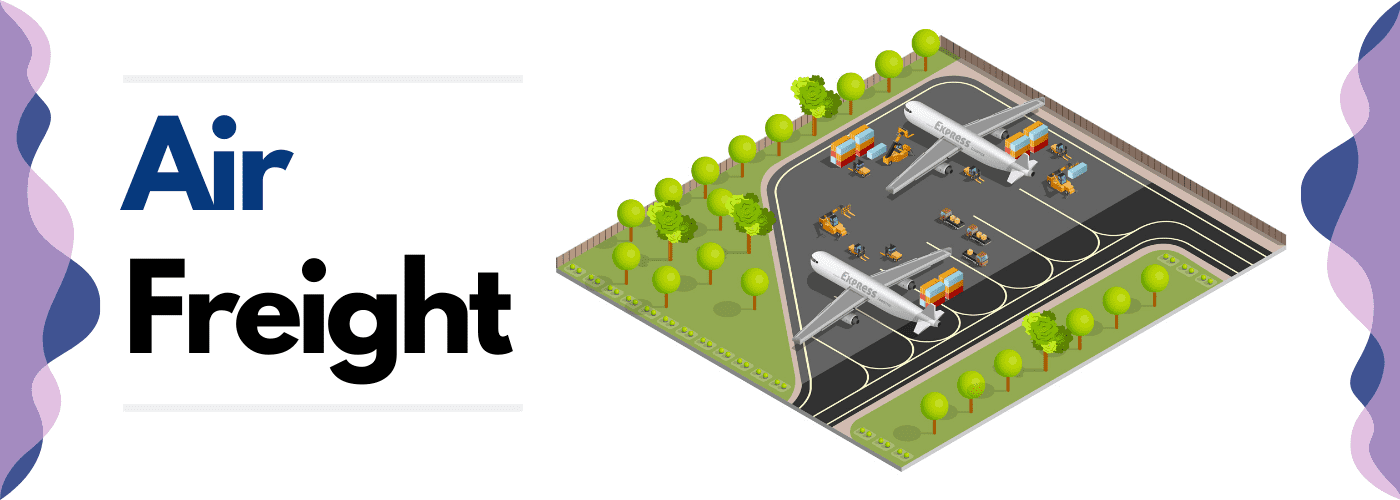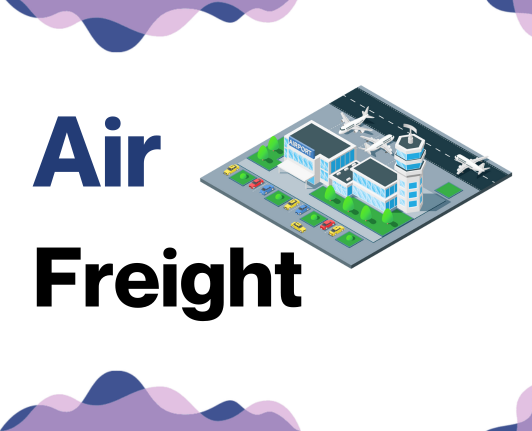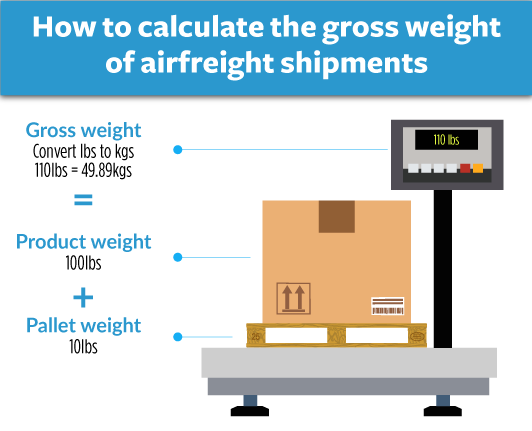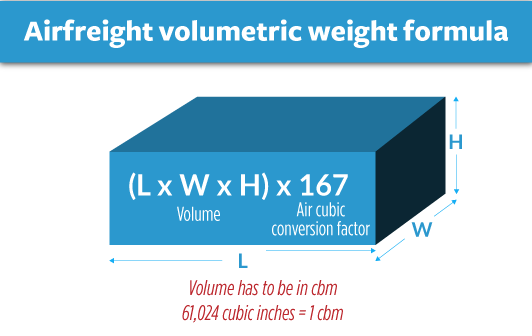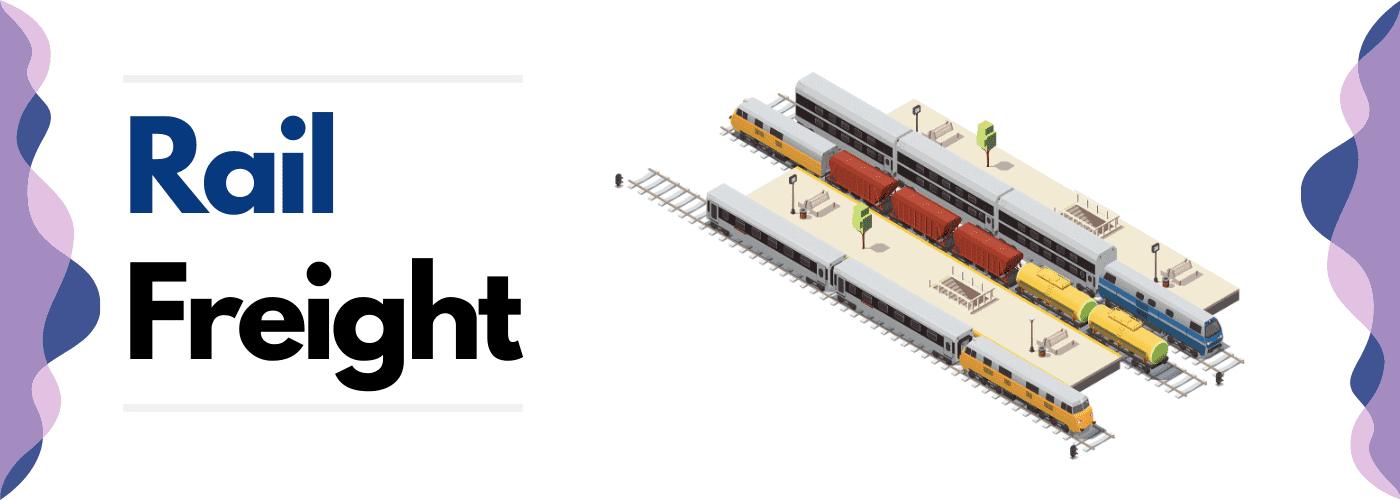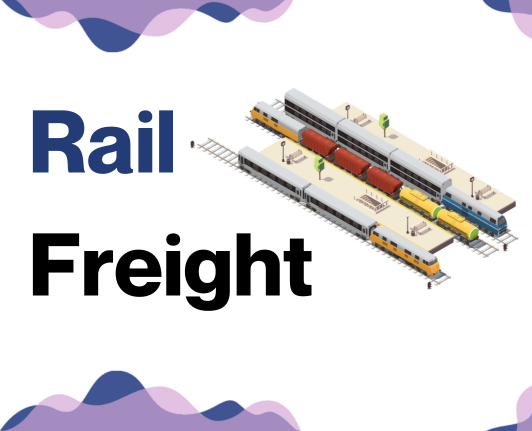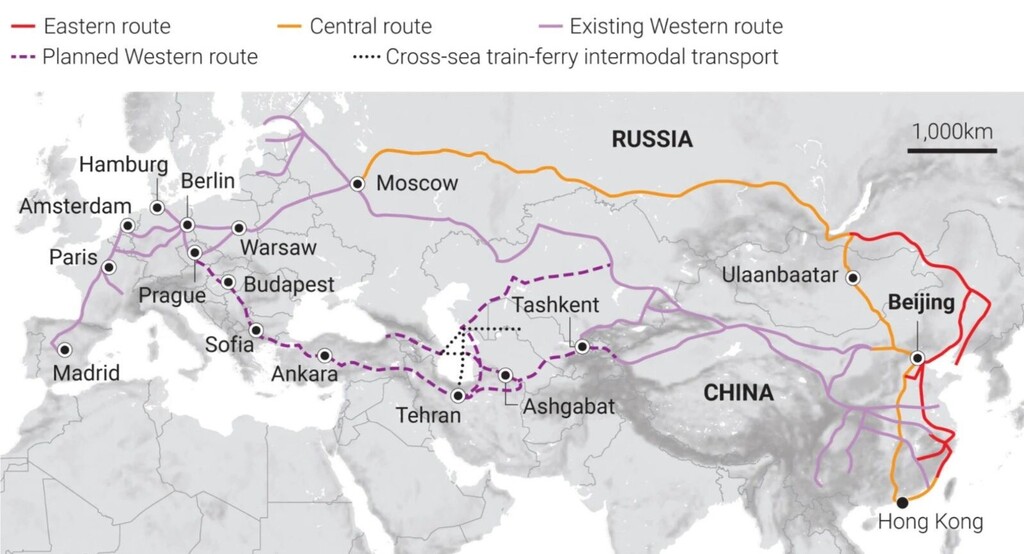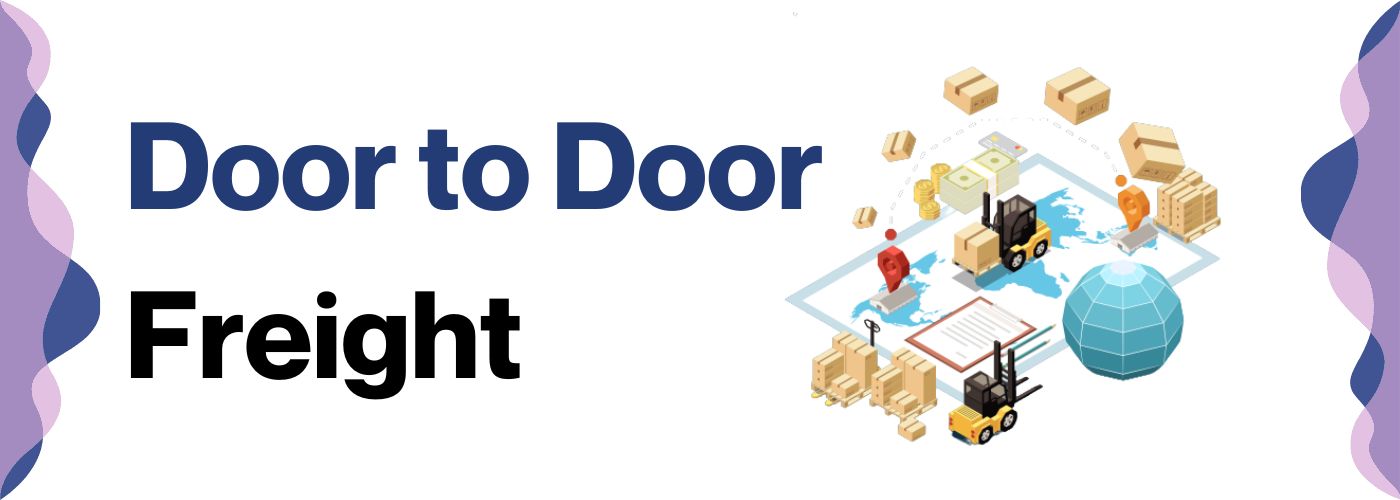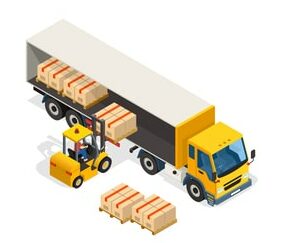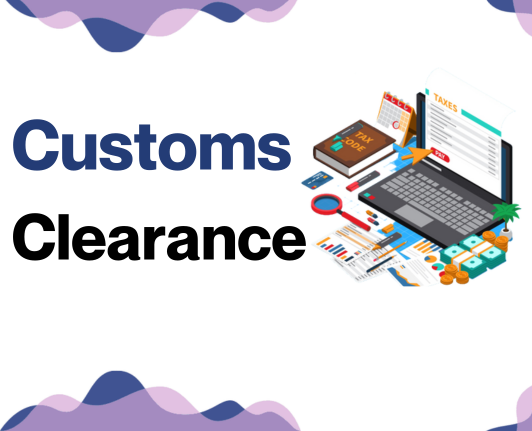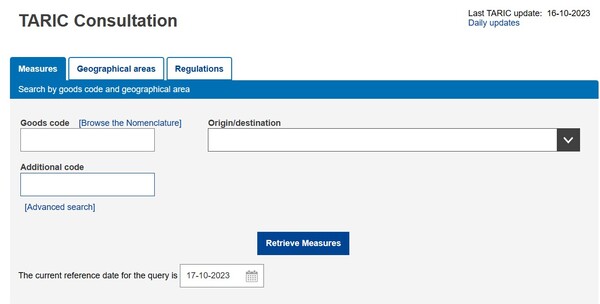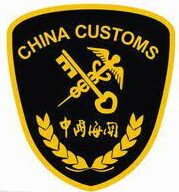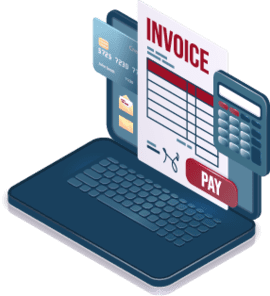Did you hear about the guy who shipped a boat by air? Don't worry, in this guide, we won't suggest any such eccentric strategies for your transportation needs between China and Luxembourg!
We understand setting up a shipping route can be challenging when grappling with transit time, rates, and let's not forget, the ever-dreaded customs regulations.
In this comprehensive guide, we'll provide you an overview of the various freight options available, decode the enigmatic realm of customs clearance, shine light on duties, taxes, and pepper it with expert advice tailored to fit the demands of businesses of all scales.
If the process still feels overwhelming, let DocShipper handle it for you!
As a leading international freight forwarder, we transform potential challenges into effective solutions, piloting every stage of your shipping journey with precision and efficiency for successful delivery of your goods.
Which are the different modes of transportation between China and Luxembourg?
When planning to ship goods from China to Luxembourg, the journey greatly depends on the path the dragonfly takes. Picture it. The dragonfly represents your shipment and has numerous ways to reach its flower or destination in Luxembourg.
Will it fly directly over the vast Eurasian landmass, using road or rail freight? Or will it flit across the expansive sea, using cargo ships?
These dragonfly routes are chosen with the package's nature, urgency, and cost in mind, creating a tailored journey. The key is mastering the winds of logistics to fit your shipping needs. After all, only a careful dragonfly reaches the most fragrant flower.
How can DocShipper help?
Looking to transport goods from China to Luxembourg? Let DocShipper simplify the process for you, managing everything from customs clearance to delivery. With our expert knowledge and vast experience, we turn complex shipping setups into seamless logistics solutions. Don't keep your questions to yourself – reach out to our dedicated consultants for free advice. Get a no-cost estimate within 24 hours. Contact us today!
DocShipper Tip: Sea freight might be the best solution for you if:
- You are shipping large volumes or bulky items, as sea freight offers the most space at a cost-effective rate.
- Your cargo doesn't have an urgent deadline, as sea freight typically has longer transit times compared to air or rail.
- Your shipping routes are between major ports, allowing you to leverage the extensive global network of sea shipping lanes.
Sea freight between China and Luxembourg
Bridging the bustling port cities of China and the heartland of Europe - Luxembourg, ocean shipping ties together key industrial centers of these two significant trading partners.
Being cost-effective for heavy, high-volume goods, sea freight is an economic pillar despite its slow pace. However, the journey across waters isn't always plain sailing.
Many shippers and businesses grapple with challenges, making mistakes that could be easily avoided with knowledge of best practices and specifications. Think of it as baking a cake - you need the right ingredients (goods), the right recipe (shipping procedures), and the right timing (schedule).
Miss one, and you might not end up with the outcomes you expect. This section of our guide serves as your fool-proof recipe book, avoiding the common pitfalls and mastering the art of successful, cost-effective shipping between China and Luxembourg.
Main shipping ports in China
Port of Shanghai
Located on the Yangtze River delta, this port is considered the world's busiest container port, handling around 43.3 million TEUs in 2020. The Shanghai port plays a pivotal role in the booming trade activities of China due to its strategic location.
Key Trading Partners and Strategic Importance: Key trading partners include the USA, Europe, and the rest of Asia with a focus on diverse commodities ranging from machinery and electronics to textiles. The port's strategic importance is underlined by its extensive hinterland and advanced container terminals.
Context for Businesses: If you're targeting broad markets, more specifically in North America, Europe, and Asia, Port of Shanghai can be a cornerstone in your logistics planning, given its unrivaled capacity and extensive network.
Port of Ningbo-Zhoushan
This port is strategically located in the coastal city of Ningbo in Zhejiang province. In 2020, it handled a record-breaking 1.12 billion tons of cargo, making it the world's largest port by cargo turnover.
Key Trading Partners and Strategic Importance: The port's key trading partners include countries along the Belt and Road Initiative, particularly Southeast Asia. A natural deep-water port, it is a key terminal for the transportation of crude oil and iron ore.
Context for Businesses: Expanding to the Asia-pacific market? You might consider incorporating Port of Ningbo-Zhoushan in your supply chain strategy due to its high cargo throughput and connections to the vast domestic Chinese market.
Port of Shenzhen
Situated in the Pearl River Delta in China's Guangdong province, the port handled a whopping 25.77 million TEUs.
Key Trading Partners and Strategic Importance: Key trading partners are primarily located in Asia, Europe, and America. It services over 130 international container routes, making it a crucial gateway for foreign trade.
Context for Businesses: If your business aims to penetrate the Asian and European markets, Port of Shenzhen would be a vital focal point owing to its comprehensive international connections and state-of-the-art infrastructure.
Port of Hong Kong
Known as one of the finest natural harbors worldwide, this port is located in one of the world's most economically active areas. The port registered throughput of 19.8 million TEUs in 2020.
Key Trading Partners and Strategic Importance: The USA, Taiwan, and Singapore are its main trading partners. As a free port, Hong Kong follows unrestricted trade policies, adding to its strategic importance.
Context for Businesses: Businesses looking to leverage free trade policies for your cargo might find Port of Hong Kong to be an optimal choice, offering simplicity in formalities, and tariffs.
Port of Guangzhou
Nestled on the Pearl River, this port circulated 23.2 million TEUs in 2020. High-tech products, petrochemicals, and automobiles are among the primary goods shipped through this port.
Key Trading Partners and Strategic Importance: This port has an extensive trade relationship with over 300 ports in more than 80 countries. It's also the largest comprehensive hub port in South China.
Context for Businesses: If you deal with high-tech products or automobiles, Port of Guangzhou can provide robust logistics support due to its specialized docks and vast hinterland.
Port of Qingdao
Situated on the Yellow Sea's coast, this port handled over 21 million TEUs in 2020, strengthening its stand as a key node on maritime Silk Road.
Key Trading Partners and Strategic Importance: Partners include Asia, Europe, and North America, it is recognized as an international shipping hub in Northeast Asia.
Context for Businesses: Businesses intending to target Northern Asia might find Port of Qingdao a strategic partner, thanks to its status as a central international shipping hub.
Main shipping ports in Luxembourg
Port of Mertert
Location and Volume: Located near the Moselle river, the Port of Mertert is the only international port in Luxembourg, making it integral for the nation's trade. It handles a shipping volume of approximately 1 million tons annually.
Key Trading Partners and Strategic Importance: The port engages predominantly with European countries, including Germany and France. Its location within Europe gives it strategic importance, especially in connecting land-locked Luxembourg to ocean access.
Context for Businesses: If you're planning to tap into the European market, especially Germany or France, then the Port of Mertert is central to your logistics strategy. Its direct waterways connection to these markets will help streamline your shipping process. By choosing this port, businesses gain ease of access to their target markets, which could potentially speed up supply chains and lower transport costs.
Should I choose FCL or LCL when shipping between China and Luxembourg?
Making the right shipping decision between China and Luxembourg can feel like steering a massive vessel - a small choice can have a huge impact.
To anchor your decision-making, we'll breakdown Full Container Load (FCL) and Less than Container Load (LCL), or consolidation. By understanding these, you can optimize costs, speed up delivery time, and navigate your business toward successful shipping.
Get ready to dive into the nitty-gritty of sea freight to ensure your cargo sails smoothly across the waters. Remember, it's not just about shipping; it's about doing it right.
LCL: Less than Container Load
Definition: Less than Container Load (LCL) shipping refers to a shipping method where different consignments from multiple shippers are consolidated into a single container. This is an ideal choice when the shipment is not large enough to fill up an entire container on its own.
When to Use: Opt for LCL when the volume of your cargo is less than 13, 14, or 15 CBM (Cubic Meter), as it offers a cost-effective and flexible option for lower volume shipments, allowing you to only pay for the space you use.
Example: Suppose you are a small business in Luxembourg importing specialized machinery parts from China that fill only a quarter of a 20ft container. Instead of having to pay for a full container, an LCL shipment allows you to share the container space and cost with other shippers, thereby making it economical.
Cost Implications: With LCL freight, costs are calculated based on the volume of your goods, rather than the entire container. This means you'll likely pay less than you would for a full container. However, it's worth noting that LCL might have additional charges due to the extra handling required at consolidation and deconsolidation points.
FCL: Full Container Load
Definition: FCL, or Full Container Load, refers to a scenario in fcl shipping where an entire container, either a 20'ft container or a 40'ft container, is used for a single shipment. Normally, this type of shipment ensures that the container is sealed from origin to destination for added security.
When to Use: FCL is a great option when you are shipping a high volume of goods. It becomes cost-effective when your cargo is more than 13/14/15 CBM, as your fcl shipping quote is priced per container, rather than per cubic meter.
Example: Imagine a toy manufacturer in Guangzhou, shipping a large number of toy cars to a distributor in Luxembourg. To make sure the cargo is secured and cost-effective, he opts for FCL. Using an FCL container, his cargo is the only one in the container, reducing potential damage and loss from other substances and ensuring cost-efficiency for high volume.
Cost Implications: FCL shipping is generally cheaper for larger volumes. With an FCL container, you pay a flat rate, whether your goods entirely fill the container or not. It can be more economical if your shipment occupies more than half of the container's consolidation space.
Remember to request an FCL shipping quote for accurate pricing.
Unlock hassle-free shipping
Simplify your shipping process from China to Luxembourg with DocShipper — your trusted freight forwarding partner. Our ocean freight experts analyze factors like cost, volume, and timing to help you decide between consolidation and full container options. Benefit from our mission to make global shipping a breeze, regardless of your business size or industry. Ready to ease your cargo shipping woes? Reach out now for a free estimation!
How long does sea freight take between China and Luxembourg?
Sea freight between China and Luxembourg typically takes around 38 days, but can vary. Transit times aren't random; they encompass a range of factors including specific port pairs, the overall weight, and the goods being transported. As this can be quite complex, it's highly recommended to use a freight forwarding service like DocShipper for an accurate, tailor-made quote.
Here's a basic overview of average transit times for sea freight between the main ports in China and Luxembourg.
| Port in China | Port in Luxembourg | Average Transit Time (Days) |
| Port of Shanghai | Port of Luxembourg | 38 |
| Port of Shenzhen | Port of Luxembourg | 38 |
| Port of Ningbo-Zhoushan | Port of Luxembourg | 38 |
| Port of Guangzhou | Port of Luxembourg | 38 |
*Please note, these times are just estimates and could change based on a variety of influencing factors.
How much does it cost to ship a container between China and Luxembourg?
Estimating the shipping cost from China to Luxembourg can be a bit like hitting a moving target. With numerous variables such as Point of Loading, Point of Destination, the carrier employed, the item's nature, and market oscillations each month, ocean freight rates fluctuate significantly.
That's why pinpointing an exact range isn't straightforward. However, you can count on our skilled shipping specialists. Understanding each business's unique needs, we provide customized quotes on a case-by-case basis, ensuring you receive the most competitive and appropriate rates for your shipment. The road to affordable and efficient shipping is less daunting with us by your side.
Special transportation services
Out of Gauge (OOG) Container
Definition: OOG containers are specialized shipping containers for Out of gauge cargo that doesn't conform to standard container dimensions. They're open at the top or sides, enabling easier loading of oversized items.
Suitable for: Oversized or non-standard-shaped freight, such as heavy machinery, industrial equipment, or construction materials that can't fit in enclosed containers.
Examples: Construction vehicles, large spools of cable, turbines, or generators are often shipped in OOG containers.
Why it might be the best choice for you: If your business exports irregular-shaped, large, or heavy goods from China to Luxembourg, OOG containers can offer customizable solutions, avoiding the need to dismantle and subsequently reassemble your equipment.
Break Bulk
Definition: Break bulk refers to goods shipped individually, not in containers. The cargo is often loaded on pallets or in bags, barrels, or boxes before it's loaded onto the vessel.
Suitable for: Different types of cargo that are too large or heavy for regular containers but don't require whole cargo ship.
Examples: Heavy machinery, construction equipment, large pipes, timber, or manufacturing equipment can be shipped as break bulk.
Why it might be the best choice for you: For non-standard shipments that are not extremely large or time-sensitive, break bulk can provide cost-effective solutions.
Dry Bulk
Definition: Dry bulk shipping involves loose cargo load transported in large quantities in the vessel's cargo holds, not packaged into containers.
Suitable for: Bulk goods - mainly homogenous, loose goods transported unpackaged in large quantities.
Examples: Common dry bulk commodities include coal, grain, or iron ore.
Why it might be the best choice for you: If your business deals with commodities production or raw materials sourcing, the cost efficiencies of shipping bulk cargo can align with your operational goals.
Roll-on/Roll-off (Ro-Ro)
Definition: Ro-Ro is a service using a ro-ro vessel designed to carry wheeled cargo, such as cars. The vehicles can rolled-on and rolled-off the ship on their own wheels.
Suitable for: Self-propelling or towable machinery, cars, trucks, or trailers.
Examples: Automobiles, trucks, semi-trailer trucks, trailers, and railroad cars.
Why it might be the best choice for you: If your company is in automotive or heavy machinery sector, Ro-Ro offers a simplified, secure, and competent method of transport between China and Luxembourg.
Reefer Containers
Definition: Reefers are refrigerated containers used to transport temperature-sensitive cargo. They maintain a constant temperature, ranging from -65°C to +40°C.
Suitable for: Perishable goods like fruits, vegetables, meat, dairy products, medicines or other temperature-sensitive materials.
Examples: Seafood, pharmaceuticals, or fresh produce exported from China to Luxembourg would require a reefer container.
Why it might be the best choice for you: If your business deals with temperature-sensitive cargo, reefer containers ensure the quality and safety of goods across the international supply chain.
Should you have more inquiries about shipping from China to Luxembourg, don't hesitate to reach out to us at DocShipper. Our team of logistics experts would be more than happy to guide you through the process and provide a free shipping quote in less than 24 hours.
DocShipper Tip: Air freight might be the best solution for you if:
- You are in a hurry or have a strict deadline requirement, as air freight offers the fastest transit times.
- Your cargo is less than 2 CBM (Cubic Meter), making it more suitable for smaller shipments.
- Your shipment needs to reach a destination that is not easily accessible by sea or rail, allowing you to tap into the extensive network of global airports.
Air freight between China and Luxembourg
Air freight between China and Luxembourg is like winning a speed race: swift, reliable, and gets high-value items to the finish line safely.
Imagine you're shipping smaller stuff like electronics or pharmaceuticals - things that have more brains or benefits than bulk. Going airborne makes sense - it's faster, ensuring your goods reach their destination in no time flat. But here's the kicker, many shippers trip up on the cost factor, missing key nuances like the right weight formula.
Imagine packing a suitcase for a flight. The price isn't just about the weight of your luggage, right? It's also about its size.
Similarly, in shipping, it’s about weight, dimensions, and even the nature of the product. If you miss these crucial details, costs can catapult, and your precious shipment can switch from being a cash king to a high-priced headache.
Hence, mastering these best practices and hidden techniques are more than just numbers—it's about intelligent shipping.
Air Cargo vs Express Air Freight: How should I ship?
Delving into your operations between China and Luxembourg, you might be torn between air cargo, slots sitting snugly in passenger airlines, or express freight, darting on planes devoted solely to cargo. Which one hits the sweet spot of your business needs? Which echoes your pace, admits your budget, and eases your logistics? Let's decode this puzzle together.
Should I choose Air Cargo between China and Luxembourg?
Opting for air cargo when shipping between China and Luxembourg could be a savvy decision. Many internationally renowned airlines offer reliable freight services, with China Southern Airlines and Cargolux ranking among the top.
Their expertise ensures cost-effectiveness and reliability, though do anticipate longer transit times due to fixed schedules. Crucially, the allure of air cargo amplifies for shipments over 100/150 kg (220/330 lbs).
So, whether you're sending electronics or fashion items, air cargo may align well with your budgetary needs.
Should I choose Express Air Freight between China and Luxembourg?
Express air freight is a unique service utilizing cargo-only planes for transporting goods quickly and securely.
If your shipment is less than 1 CBM or weighs within 100/150 kg (220/330 lbs), it could be an ideal choice. Popular courier firms like FedEx, UPS, and DHL offer these services, ensuring rapid, efficient delivery from China to Luxembourg.
As these carriers operate on a network of fixed routes and schedules, they can provide a high degree of reliability. This swift transit could be especially beneficial if your business operates on tight deadlines or caters to on-demand consumers.
Main international airports in China
Beijing Capital International Airport
Cargo Volume: Handles approximately 2 million tons of cargo annually.
Key Trading Partners: Primary partners include the United States, Japan, South Korea, Germany, and Australia.
Strategic Importance: Being the largest airport in China, it serves as a critical hub for international and domestic flights.
Notable Features: The airport operates 24/7 and boasts state-of-the-art cargo facilities with advanced tracking systems.
For Your Business: If you are looking to ship goods to North China, BCIA's high cargo volume and expansive network make it ideal for a broad range of goods and supply chain needs.
Shanghai Pudong International Airport
Cargo Volume: Manages over 3.5 million tons of cargo per year.
Key Trading Partners: Main connections include the United States, Japan, Hong Kong, South Korea, and Germany.
Strategic Importance: Given its location, it serves as an essential gateway to the Yangtze River Delta.
Notable Features: It's renowned for its dedicated cargo terminals for major international couriers.
For Your Business: Possessing robust infrastructure and cargo management systems, this airport can cater to businesses in East China, irrespective of your cargo size or type.
Guangzhou Baiyun International Airport
Cargo Volume: Transports roughly 1.9 million tons of cargo per year.
Key Trading Partners: Major partners consist of the United States, Australia, Japan, India, and Vietnam.
Strategic Importance: It's a crucial logistics centre in South China and a well-connected hub for Southeast Asia.
Notable Features: This airport is known for its high cargo efficiency and extensive courier services.
For Your Business: If your business operates in South China, including Guangdong, Fujian, and neighboring provinces, this airport's cargo facilities and international connections can significantly streamline your logistics.
Chengdu Shuangliu International Airport
Cargo Volume: Shifts about 1 million tons of cargo annually.
Key Trading Partners: Core relationships are with France, Germany, Canada, Japan, and Brazil.
Strategic Importance: It serves as a crucial hub for Western China, catering to trade routes across Asia, Europe, and North America.
Notable Features: The airport emphasizes its role in handling perishable goods, especially fresh food.
For Your Business: If you are involved in the perishables industry or operate in Western China, Chengdu Shuangliu's cargo capabilities and strategic location can be beneficial for your shipping requirements.
Hangzhou Xiaoshan International Airport
Cargo Volume: Dispatches approximately 0.8 million tons of cargo per year.
Key Trading Partners: Key markets include Russia, the United States, Japan, Germany, and South Korea.
Strategic Importance: This airport connects Zhejiang Province and forms integral commercial corridors across the globe.
Notable Features: It has a unique focus on e-commerce logistics, serving as a critical point for e-commerce giant Alibaba.
For Your Business: Specialising in e-commerce, this airport is an excellent choice if you wish to transfer online retail items or operate in the Jiangsu-Zhejiang-Shanghai area.
Main international airports in Luxembourg
Luxembourg Findel Airport
Cargo Volume: Luxembourg Findel Airport, situated in the heart of Europe, can handle over 897,000 tons of cargo annually. This high volume capacity means it's well-suited to large and frequent shipments.
Key Trading Partners: The airport is a hub for trade between Europe and key markets in Asia, the US, and the Middle East.
Strategic Importance: As the home base of Cargolux, one of the world's top freight airlines, it plays a significant role within the global air freight network. The airport's strategic location makes it an excellent choice for European entry and exit.
Notable Features: The airport operates 24/7, boosting your flexibility in shipping schedules. It's well-equipped to handle a diverse range of cargo, from perishables to high-value items.
For Your Business: This hub could be a crucial factor in your strategy if your goods need to reach European markets swiftly or fall under the specialty cargo category that the airport is well-equipped to handle.
How long does air freight take between China and Luxembourg?
The average transit time for air freight shipments between China and Luxembourg typically ranges from 3 to 5 days. However, exact duration can significantly vary based on different factors.
These factors include specific departure and arrival airports, the weight and measurement of your cargo, and the specific nature of the goods being shipped.
For accurate and precise transit times for your specific shipping needs, it is recommended to consult with an experienced freight forwarder like DocShipper.
How much does it cost to ship a parcel between China and Luxembourg with air freight?
Average air freight costs between China and Luxembourg typically range from $3 to $5 per kg. However, providing a precise rate isn't feasible as it can vary based on factors such as airport location, parcel dimensions, weight, and goods nature.
Rest assured, our team tailors quotes to your specific logistics requirements, ensuring competitive rates.
Remember, we're here to navigate this complex process and provide you with the best solution. Feel free to reach out for a free quote. We'll respond in less than 24 hours.
What is the difference between volumetric and gross weight?
Let's begin by defining the two concepts: Gross weight is the actual physical heaviness of your goods, including packaging and pallet, measured in kilograms. Imagine placing your entire shipment on a scale; what it displays is your gross weight.
Volumetric weight, on the other hand, isn't about mass but more about the space your shipment takes in an aircraft. It considers the volume of your package, combining the length, width, and height.
To calculate these in Air cargo and Express Air Freight services, we use the following formulas:
1. Gross weight is calculated simply by weighing the entire packaged shipment in kilograms (kg).
2. Volumetric weight is a little trickier. You multiply the length (L), width (W), and height (H) of the package, all in centimeters (cm). Now, in Air Cargo, divide this result by 6000. In Express Air Freight, the divisor changes to 5000.
Let's assume you have a package measuring 50cm (L) 50cm (W) 50cm (H), weighing 30kg:
- Its gross weight is 30kg (around 66 lbs).
- In Air Cargo, the volumetric weight is (505050)/6000, equating to approximately 21kg (around 46 lbs).
- In Express Air Freight, the calculation changes to (505050)/5000, giving about 25kg (around 55 lbs).
Knowing these weights becomes essential as freight charges are based on whichever is higher between the gross and volumetric weight, impacting your shipping costs. This helps carriers allocate space efficiently and maximize profits — it's crucial in planning your shipping strategy!
DocShipper tip: Rail freight might be the best solution for you if:
- You are looking for a cost-effective transportation method for large volumes.
- Your shipping route is well-connected by rail, providing a reliable and environmentally friendly option.
- Your cargo's destination and origin are near rail terminals, minimizing the need for additional road transportation.
Rail freight between China and Luxembourg
Ever thought trains could be international globetrotters too? Welcome to the intriguing world of rail freight between China and Luxembourg, a story that started in 2007.
Chugging through the vast terrains of Russia, Belarus, and Germany, this 10,000-kilometer logistical marvel became a vibrant artery for goods like electronics, machinery, and auto parts.
Trade bloomed thanks to this dependable iron horse. China found in Luxembourg a strategic gateway to Europe, boosting the economic interplay between them.
However, fast-paced businesses might find the pace of rail freight a tad slower compared to air freight, but hey, your pocket will thank you!
The mystery of customs, though, isn't spared from this route. Delays due to inspections or paperwork mishaps are potential bumps on this road. So grab your detective's hat and let's dig deeper.
Could the rhythmic clatter of train wheels be the new melody of your shipping journey?
What are the main train stations between China and Luxembourg?
Shanghai Railway Station, China
This station is a major hub in the national railway network of China and handles a significant volume of cargo. It boasts a strategic location due to its proximity to Shanghai Port, one of the busiest in the world.
If your business heavily relies on maritime shipping, the Shanghai Railway Station can facilitate seamless transfers between ocean and rail freight.
Chengdu Railway Station, China
Being the centerpiece of the Chengdu-Chongqing economic zone, this station caters to a huge cargo volume and deals extensively with major trading partners like the United States and Europe.
If your business involves frequent shipping to these areas, incorporating Chengdu Railway Station into your strategy can offer major operational advantages. If your business involves diverse shipping routes within and outside China, Zhengzhou Railway Station might be a sensible decision.
Wuhan Railway Station, China
Renowned for its large rail transfer center, Wuhan Railway Station is connected to all the major cities in China.
If you are a business considering freight consolidation strategies to and from different Chinese cities, Wuhan Railway Station could be an efficient consideration.
Zhengzhou Railway Station, China
This is a significant railway port in the national rail network. It's critically positioned at the intersection of the Longhai and Beijing-Guangzhou railway lines, which are major east-west and north-south freight corridors, respectively.
Luxembourg Central Railway Station, Luxembourg
Being a small nation, Luxembourg has only one major train station for cargo – Luxembourg Central Railway Station. It's an intermodal freight hub that handles high cargo volume and connects with multiple international rail links.
This means that despite other countries having many cargo train stations, you have a singular key location to handle all rail freight shipping to and from Luxembourg.
Keep these strategic locations in mind as you chart your shipping strategy, as the right choice of rail freight stations can significantly streamline your shipping operations and meet your business needs more efficiently.
Remember, aligning your shipping strategy with these hubs can provide economical, efficient, and diverse shipping options.
How long does rail freight take between China and Luxembourg?
Transit times for shipping between China and Luxembourg by rail freight can be influenced by numerous factors including customs procedures, weather conditions, and more. On average, it takes around 16-20 days.
Below, you'll find a breakdown of various rail networks connecting China and Europe detailing transit times and frequency of departures. Remember, these are estimates; real-world transit can be unpredictable.
- Zhengzhou to Hamburg (Germany): ~ 15-17 days, Departs Daily
- Zhengzhou to Munich (Germany): ~ 17-18 days, Departs Monday and Friday
- Zhengzhou to Liege (Belgium)/Milan (Italy): ~ 20 days, Departs Monday, Thursday and Friday
- Chongqing to Duisburg (Germany): ~ 16-17 days, Departs Monday/Friday
- Yiwu to Hamburg (Germany): ~ 16-18 days, Departs Monday/Thursday/Friday
- Yiwu to Duisburg (Germany): ~ 16-18 days, Departs Monday/Thursday/Friday
- Yiwu to Madrid (Spain): ~ 20 days, Departs Monday/Thursday/Friday
- Wuhan to Hamburg (Germany): ~ 17-19 days, Departs Saturday/Wednesday/Thursday
- Wuhan to Duisburg (Germany): ~ 17-19 days, Departs Saturday/Wednesday/Thursday
- Chengdu to Tilburg (Netherlands): ~ 18 days, Departs Wednesday/Sundayy
- Suzhou to Hamburg (Germany): ~ 18-20 days, Departs Sunday
- Suzhou to Duisburg (Germany): ~ 18-20 days, Departs Sunday
- Xi'an to Duisburg (Germany): ~ 18-20 days, Departs Wednesday/Thursday/Friday/Saturday
What are the advantages of rail transport between China and Luxembourg
Choosing rail transport for shipping goods between China and Luxembourg can offer several advantages, perfectly straddling the line between cost-efficiency and speed.
Imagine having to dispatch your product in an economical yet somewhat swifter way – rail freight is your answer. It's faster than sea freight – where a shipment could take up to 35-40 days, rail transport usually cuts this to about 16-20 days. It also proves to be cheaper than air freight, reducing your overall expenses and thereby boosting your profit margin.
For instance, suppose you're in the electronics industry where delivering cargo quickly is crucial, but air freight is too expensive. Rail freight provides a viable solution to maintain a balance.
So, whatever your industry, this blend of timeliness and affordability can make rail freight an attractive option for your supply chain.
How much does shipping goods by train between China and Luxembourg cost?
Understanding the precise cost of shipping goods by train between China and Luxembourg goes beyond figures in a guide.
Lots of factors come into play—not just distance and haulage costs, but factors like nature and volume of goods, customs duties, and specifics of the route. It's why we tailor every cost estimate to individual shipments, keeping your needs upfront.
Rest assured, we're keen on offering you the most competitive rates in the business. Ready to take the next step? Hit the contact button. Our quotes are quick, free, and delivered to your inbox in under 24 hours.
DocShipper tip: Door to Door might be the best solution for you if:
- You value convenience and want a seamless shipping process, as door-to-door takes care of every step from pickup to delivery.
- You prefer a single point of contact, as door-to-door services typically provide a dedicated agent to handle all aspects of the shipment.
- You want to minimize the handling of your goods, reducing the risk of damage or loss, as door-to-door minimizes transitions between different modes of transport.
Door to door between China and Luxembourg
Making the logistics journey as simple as possible, international door-to-door shipping is your all-inclusive service, efficiently moving goods from a location in China straight to your doorstep in Luxembourg.
This method packs benefits like greater convenience, faster delivery, and cost-effectiveness. Now, let's dive in and master the secrets of door-to-door shipping between these places!
Overview – Door to Door
Experiencing challenges with shipping from China to Luxembourg? Explore Door to Door shipping - an immensely popular solution among our clients at DocShipper.
Stress and complexity are eliminated, giving you absolute convenience and a peace of mind. Its perks? Duties, customs clearance, tracking…all taken care of!
However, be eagle-eyed for potential delays and customs issues. A thorough understanding lets you turn shipping from being a herculean task to a walk in the park. Dive in to decode this shipping method's triumphs and trials.
Why should I use a Door to Door service between China and Luxembourg?
Ever tried juggling sushi rolls while riding a unicycle? That's what handling international shipment logistics can feel like sometimes. But that's where Door to Door service steps in like your favorite superhero, between China and Luxembourg. Let's break this down into five easy-to-digest reasons.
1. Stress-Buster: Forget about juggling different carriers or navigation through customs - your shipment is picked up directly from the source and delivered to the desired location. No you swivel your chair stress-free.
2. Timeliness: Sudden urgent shipment? Keep cool! Deliveries are precisely timed to meet your tight schedules. Say goodbye to those nail-biting last-minute hitches.
3. Specialized Handling: Complex cargo can be trickier than a 3000-piece jigsaw puzzle. Which is why Door to Door services ensure that your shipment gets the specialized care it deserves. No more worrying about mishandling or damages.
4. Trucking is on Us: You won't have to deal with truck arrangements from the port to the final destination. Think of it like having a personal chauffeur for your goods. How's that for VIP treatment?
5. Convenience: Circle this one twice! Remember, Door to Door service is about maximum ease and simplicity. It's your one-stop-shop for international shipping, No more endless paperwork or red tape.
So, if you're looking to take the hassle out of transportation logistics, Door to Door services may just be your perfect match. After all, who wouldn't want a simpler, faster and smoother cargo-shipping experience?
DocShipper – Door to Door specialist between China and Luxembourg
Experience hassle-free shipping with DocShipper, your one-stop solution for door-to-door shipping between China and Luxembourg. Our experts manage everything from packing your goods to navigating customs and arranging transportation. We boast a myriad of shipping method expertise, ensuring a smooth shipment journey.
Rest assured, a dedicated Account Executive is at your call for personalized assistance. Need a quote? Reach out and get a free estimate within 24 hours or call our consultants for expert advice. Sit back and ship with confidence as we handle the complexities. Your shipping task is now ours.
Customs clearance in Luxembourg for goods imported from China
Wrangling the intricate web of customs clearance—essentially the pivotal process of getting your goods legally from China to Luxembourg—can seem as tricky as scaling the Great Wall itself.
Surprises in the form of unforeseen fees or charges can pop up and products can get tied up in customs limbo. Ensuring that you're versed in customs duties, taxes, quotas, and licenses can help navigate this tricky terrain.
But don't fret—our subsequent sections are here to guide you through the labyrinth. What's more, DocShipper, our trusted partner, is on hand to make the journey smoother. With just the origin, value and HS code of your goods, they can tailor-make your process and provide an estimate to help budget your project, simplifying your customs clearance with global expertise.
How to calculate duties & taxes when importing from China to Luxembourg?
Estimating duties and taxes for imports from China to Luxembourg may, at first glance, seem like tackling a winding mountain road.
Fear not, it all comes down to mastering a few critical elements. Firstly, the country of origin - in this case, China - where your goods are manufactured or produced. Next, discover your product's Harmonized System (HS) code, a universal taxonomic framework that classifies trade goods. Bolster your understanding with the Customs Value, or the total value of your imported goods.
Equipped with this knowledge, you'll apply the appropriate tariff rate to the customs value, rounded out by any additional taxes and fees that pertain to your specific product.
Armed with these elements, the first leg of your journey begins with identifying the country of production, a crucial step in our customs calculation roadmap.
Remember, country of origin isn't just where your goods hop on the freight train; it refers to where they were fondly manufactured or dutifully produced.
Step 1 - Identify the Country of Origin
Identifying the country of origin, in this case, China, is a critical first step when importing to Luxembourg.
Here's why:
1. Tariff codes: It helps determine the correct HS (Harmonized System) code, which decides the customs duties payable.
2. Trade agreements: China has a unique trade relationship with Luxembourg, and understanding the agreements in place can reduce customs duties.
3. Import restrictions: Knowing the origin allows you to anticipate possible import limitations specific to Chinese goods.
4. Customs duties: Trade agreements alteration affects duties, so changes between China and Luxembourg could impact your costs.
5. Compliance: Correctly identified origin helps avoid potentially costly misunderstandings with customs authorities.
Now, let's explore the trade agreements between China and Luxembourg. The EU-China Trade Agreement offers tariff rate quotas, benefiting you by reducing duties for designated products. But remember, eligibility is product-specific. Therefore, finding your product's HS code is essential.
Watch out for import restrictions, too. Luxembourg has regulations on importing textiles, steel, and certain agricultural products from China. Do your research. Not adhering could lead to penalties.
Lastly, form a trusted relationship with a customs broker. They can offer essential advice on duties, taxes, restrictions, and ensure your shipments clear customs smoothly. Leveraging their expertise might save not only cash but also precious time.
Step 2 - Find the HS Code of your product
The Harmonized System, or HS Code, is a standardized method of classifying traded products. Developed by the World Customs Organization, the code aids governments in the collection of international trade statistics, facilitates the collection of tariff duties, and supports the implementation of trade policies.
In essence, it's about identifying your product in a language customs officers worldwide will understand.
Generally, securing the HS code is as simple as asking your supplier. They are commonly familiar with the products they export and related import regulations, including the correct classification codes.
If inquiring from your supplier isn't possible, worry not! Use the Harmonized Tariff Schedule tool which offers an easy-to-navigate resource for finding your product's HS Code. Once on the site, type the name of your product into the search bar. Subsequently check the Heading/Subheading column. This is where your product’s HS code will show up.
A word of caution, accuracy is crucial when it comes to HS Codes. An incorrect code can lead to shipment delays and potential fines. Fine-tuning the code can mean the difference between a smooth customs clearance process and an extended hold up at the border.
And that's it! Now, you might wonder, what does an HS code look like, and how do I read it? Well, to help decipher the code, we've created a handy infographic. Rest assured, with the right tools and guidance, managing international shipping is very manageable!
Step 3 - Calculate the Customs Value
Determining the customs value of imported goods in Luxembourg from China might have you scratching your head, but it's simpler than it sounds. The customs value isn't just the price of the goods you're shipping. Instead, it's a collective figure known as the CIF value.
Here's how it adds up: your goods' worth ('price of the goods') + the cost to transport them ('international shipping') + any insurance fees.
For example, if your goods cost $5000, with $2000 shipping cost and $100 insurance, the CIF value would be $7200. This is what Luxembourg customs will base any duties or taxes on. Understanding this can help you plan your shipping budget wisely.
Step 4 - Figure out the applicable Import Tariff
An import tariff, in simple terms, is a tax imposed by a government on goods imported into the country. For goods being transported from China to Luxembourg, which is in the European Union, these tariffs are managed at an EU level. You'd identify your applicable import tariff using the TARIC System - European Customs.
Here's how it works: You first enter the HS (Harmonized System) code for your goods, and select China as the country of origin. This will display the applicable duties and taxes for your product.
To illustrate, let's say you're importing leather handbags from China, which have an HS code of 420221 (you should verify the exact code for your goods). Plugging this code into the TARIC system might show an import duty rate of 3%.
Now let's imagine your shipment has a CIF value (Cost, Insurance, and Freight) of USD 10,000. To calculate the total customs duties, you would multiply this value by the import duty rate, like this:
$10,000 (CIF) x 3% (duty rate) = $300
So the import duties you'd pay for this shipment would be USD 300. Remember, these values are just examples, your actual duty might vary based on the type of good, the CIF value, and the currency exchange rates. Do refer to the TARIC system for precise information customized to your goods.
Step 5 - Consider other Import Duties and Taxes
When importing goods from China to Luxembourg, you'll find that standard tariffs are just the tip of the iceberg. Other import duties and taxes might also apply, depending on your specific circumstances. For instance, let's take the excise duty. It's a tax levied on particular goods like tobacco, alcohol, or energy products, often calculated per quantity rather than value.
Now, consider the anti-dumping taxes. Imagine you're importing ceramic tableware, and China is selling beneath normal price levels impacting the country's market. To protect the local economy, Luxembourg might levy an anti-dumping tax, raising your import costs.
The most significant among these might be the Value Added Tax (VAT). In Luxembourg, the standard VAT rate is 17%, but reduced rates of 14%, 8%, and 3% do apply to certain goods/services respectively. If your ceramics worth $20,000 incur a 17% VAT, you'll have to shell out an additional $3,400.
Remember, these are hypothetical examples, and real rates may vary. Always consult a customs specialist or use customs databases to receive accurate information. Avoiding surprise expenses will mark the difference between a successful and a cumbersome import process.
Step 6 - Calculate the Customs Duties
Calculating customs duties while importing goods from China to Luxembourg? Let's break it down. The general formula includes three components: Customs Value (CIF), VAT, and Anti-dumping taxes.
Example 1: Assume the customs value (CIF) of your goods is USD 10,000 and the duty rate is 5%. The customs duty would be USD 10,000 5/100 = USD 500.
Example 2: In addition to customs value, consider VAT. Let's say the VAT rate in Luxembourg is 17%. In this scenario, you have to add the VAT amount (USD 10,000 17/100 = USD 1,700) to the customs duties calculated in example 1.
Example 3: Now, suppose you also have anti-dumping taxes and Excise duty. Excise duty is specific to the product type — let's assume it's 10% here. Hence, in addition to the customs duties (USD 500), you need to calculate VAT (USD 1,700) as in example 2, and add the anti-dumping tax (USD 10,000 10/100 = USD 1,000).
Remember, these calculations can be complex, and mistakes costly. Our experts at DocShipper can streamline each step of your customs clearance, ensuring no overpayment on your part. Avail of our free under-24h quote service and avoid additional charges.
DocShipper: making global shipping simplified and cost-friendly.
Does DocShipper charge customs fees?
While DocShipper does handle your customs clearance as a broker in China and Luxembourg, you should know we don't charge any customs duties. These are separate and go directly to the government.
What we do charge for is facilitating the customs clearance process. You'll receive documented evidence from the customs office to assure you're only paying government-imposed duties. So, it's like sorting out a complex paperwork job – only it's us doing the heavy lifting, not you.
Contact Details for Customs Authorities
China Customs
Official Name: The General Administration of Customs of the People's Republic of China.
Official Website: www.english.customs.gov.cn
Luxembourg Customs
Official Name: Customs and Excise Administration of Luxembourg
Official Website: www.do.etat.lu
Required documents for customs clearance
Untangling the red tape of customs clearance? A breeze if you know your vital documents: Bill of Lading, Packing List, Certificate of Origin, and conformity docs like the CE standard. Let's demystify this paperwork to smooth out your shipping process. Stay tuned.
Bill of Lading
In your shipping journey between China and Luxembourg, the Bill of Lading (BoL) plays a critical role—it's like the golden ticket of maritime transport.
Essentially an ownership receipt, it transfers rights of your goods from shipper to consignee, and is especially vital for customs clearance. Opting for an electronic telex release of the BoL can save you both time and a rainforest of paperwork—even better, right? This electronic version keeps things swift and simple. For air cargo, there's a similar paper trail—the Air Waybill (AWB), ensuring your shipments soar without a hitch.
Remember, big or small, every shipment deserves a well-executed BoL or AWB—it's the confidence you need when tackling international trade's challenging maze.
Packing List
When shipping goods from China to Luxembourg, getting your Packing List right is paramount. As a shipper, it's your responsibility to ensure that this document is accurate down to the smallest detail - it's more than just an inventory.
It provides customs officers with crucial information about your shipment, whether it's dispatched by sea or air. This includes details on the quantity, description, and weight of the items in your containers.
If, for example, you're shipping 500 cases of porcelain vases, any discrepancy in your Packing List might raise a red flag, potentially leading to delays in clearance or even fines.
Therefore, the accuracy of your Packing List is instrumental in avoiding any potential hiccups in your journey from China to Luxembourg.
Commercial Invoice
Planning to ship goods from China to Luxembourg? You'll need a Commercial Invoice, a vital document that details your goods and their value. It's vital to your customs clearance, acting as the foundation for calculating duties and taxes. Be sure to align it with other shipping documentation to avoid any hindrances.
Include essential details such as seller and buyer names, a description of the products, HS codes, quantity, and price. For instance, if you're shipping electronic parts, your invoice must be accurate, detailing each component, its corresponding HS code, quantity and price.
Accuracy is the key here! A misaligned or missing description could cause customs to hold your shipment, leading to delays, additional costs, even penalties. So, take your time, double-check your entries, and ensure seamless shipping from China to Luxembourg.
Certificate of Origin
When shipping goods from China to Luxembourg, the Certificate of Origin plays a pivotal role in determining your product's customs dues. It's your golden ticket to preferential duty rates.
Imagine you're distributing authentic Chinese teas; your Certificate of Origin validates their Chinese pedigree, potentially securing lower tariffs. It serves as the declarative passport for your goods, stating the country of manufacture explicitly.
Never underestimate its worth-- errors or omissions can lead to higher customs costs. Think of it as an essential backstage pass, granting your product smooth access to the Luxembourg market. Good paperwork equals good business.
Certificate of Conformity (CE standard)
When shipping goods from China to Luxembourg, a key document you'll need is the Certificate of Conformity (CE standard).
This critical hallmark proves your products meet the stringent quality and safety standards in Europe. Unlike a simple quality assurance, the CE mark holds weight, verifying goods are up to par with EU legislative requirements.
It's somewhat similar to the FCC Declaration of Conformity used in the United States. To expedite your shipping process, ensure that your products are CE certified before departure.
This will prevent unnecessary hold-ups during customs clearance and give your goods immediate market access upon arrival. Keep in mind, CE is mandatory; without it, you might face penalties or shipment delays.
Your EORI number (Economic Operator Registration Identification)
To keep your shipping operations between China and Luxembourg seamless, securing an EORI number is pivotal.
This unique ID simplifies tracking your imports and exports within the EU region. If, for instance, you're exporting luxury watches to Luxembourg, an EORI number functions as your business's ID in customs transactions, quickening the clearance process.
To get this number, you'll need to apply on your home country's custom website; for example, Chinese businesses would apply through the China Customs site. Remember, for every market in the EU that your business touches, you should have an EORI - it's a must-have for your trade compliance checklist.
Get Started with DocShipper
Cut through the red tape when shipping from China to Luxembourg—hand off the hassles of customs clearance to us! DocShipper will manage the intricate procedures, dealing with the paperwork, briskly and efficiently. Need help to make your global trade smoother? Get in touch today for a free quote. Prompt response guaranteed within 24 hours.
Prohibited and Restricted items when importing into Luxembourg
Avoid shipping mix-ups and costly delays when sending goods into Luxembourg by knowing exactly what's off-limits. Whether you're unsure about restrictions on foodstuffs or questioning if certain electronics are forbidden, understanding these limitations is key to a successful import strategy.
Restricted Products
Here's your rundown on products restricted in Luxembourg, along with the necessary steps you need to get the green light:
1. Pharmaceuticals and Personal Care Products: You have to apply for a Medicine Import License from the Ministry of Health .
2. Firearms and Ammunition: A Special Import Permit from the Police Grand Ducale is a necessity.
3. Animals and Plant Products: A Health Certificate from the Veterinary Services Division is mandatory for you.
4. Alcohol and Tobacco: An Excise Duty License from the Customs and Excise Agency is what you'll need.
5. Communication Equipment: You need to engage the Institute of Media and Telecommunications for a Telecommunications Import License.
6. Radioactive Materials: Apply for a Nuclear Use License from the High Commission for National Protection.
Please note, these are subject to change. Always check with the relevant agencies before shipping.
Prohibited products
- Narcotics and illegal drugs
- Unsafe and non-approved pharmaceuticals
- Weapons and ammunition without proper documentation
- Explosive materials and fireworks
- Products made from endangered animals
- Items that violate intellectual property rights
- Counterfeit money and goods
- Toxic and hazardous substances
- Untreated animal hide and fur
- Infectious substances
Are there any trade agreements between China and Luxembourg
Absolutely! In fact, China and Luxembourg have had significant trade relations for quite some time. There's the Belt and Road Initiative (BRI) which strengthens Eurasian economic and trade links.
It involves infrastructure projects including rail, which could positively impact your shipping logistics. Although there's no specific FTA or EPA between the two countries, the EU-China Comprehensive Agreement on Investment is under negotiation and could open up more trade opportunities. Adapt to the changing landscape, and you'll find your shipping business thriving.
China - Luxembourg trade and economic relationship
The China-Luxembourg economic relationship is rich in history and multi-faceted in nature. Over the years, both countries have built a symbiotic bond, marked with key developments like Luxembourg becoming a founding member of the Asian Infrastructure Investment Bank in 2015. Today, their trade relations span sectors such as finance, manufacturing, and logistics, contributing to a bilateral trade volume valued at over €1 billion annually.
At the heart of this impressive trade volume are major commodities like machinery, automotive parts, chemicals, and steel. As China is a major market for Luxembourg's industrial goods, likewise, Luxembourg is a crucial hub for Chinese investments in Europe. In fact, China's direct investment in Luxembourg recorded an unprecedented €4 billion recently. Conversely, Luxembourgish companies, particularly in the financial sector, have found a fruitful market in China. All of these factors testify to the robust nature and bright future of the Luxembourg-China trade relationship.
Your Next Step with DocShipper
Feeling overwhelmed by the complexities of shipping between China and Luxembourg? Let us lift that weight off your shoulders. At DocShipper, we are seasoned experts in transport organization, customs clearances, and ensure your goods get from China to Luxembourg hassle-free. Discover how smooth international shipping can be. Don't wait, contact us today for your shipping solutions.
Additional logistics services
Explore DocShipper's full suite of supply chain solutions, beyond just shipping and customs. We handle everything, making global trade hassle-free and more rewarding for you. Your business, our mission.
Warehousing and storage
Finding the right warehousing in China can seem like looking for a needle in a haystack. If you're dealing with temperature-sensitive products like wine or chocolates, it increases the level of complexity. Don't fret. We have you covered with our top-notch warehousing services, fitting for an assortment of goods. Jump over to our take on perfect Warehousing for in-depth details.
Packaging and repackaging
Understanding effective packaging is crucial in shipping from China to Luxembourg! Why? It safeguards your goods from damage and conforms to regulations. Having a reliable agent like DocShipper to oversee the process can also help, whether you're shipping electronic gadgets or delicate porcelain.
Cargo insurance
While fire insurance covers losses from flames, cargo insurance is your safety net on the move. It wards off unexpected expenditure due to accidents or mishaps during transport; like that expensive machinery damaged at a rough sea. Prevention is key and cargo insurance is a proactive step to mitigate risks. Swap those worry lines for peace of mind with Cargo Insurance, your knight in shining armor.
Supplier Management (Sourcing)
Shipping from China to Luxembourg and grappling with supplier issues? DocShipper simplifies sourcing, even in Asia or East Europe. We spot suppliers, handle procurement, and bridge language gaps to make the whole process smooth sailing. Imagine zero fuss about supplier management! Intrigued?
Personal effects shipping
Transitioning personal belongings between China and Luxembourg? We've got you covered! Your heirlooms, sentimental gems, and bulky furniture are handled with the utmost care – we treat them as if they were our own. Remember that time when we maneuvered a grand piano through tight stairways in Shanghai? Exactly!
Quality Control
Quality control in shipping China-Luxembourg is your safeguard against product defects that can disrupt your supply chain. Picture this: Your recently shipped batch of high-tech gadgets fails EU inspections due to a minor glitch that slipped through at a factory in Shenzhen. By implementing rigorous quality inspections, you'll catch these errors early, reducing costly customs issues. Ensure your product's excellence with us.
Product compliance services
When shipping goods, ensuring product compliance with regulations is crucial. That's where our product compliance services come in handy, we conduct laboratory tests to certify your goods align with the rules of the destination. Ship with confidence knowing there will be no legal hiccups. It’s a stride towards fostering trade relationships that are smooth sailing and satisfying.
FAQ | For 1st-time importers between China and Luxembourg
What is the necessary paperwork during shipping between China and Luxembourg?
Shipping your goods from China to Luxembourg entails dealing with several essential documents. If moving goods by sea or air, the corresponding shipping documents are the bill of lading or airway bill, respectively. But don't worry, as DocShipper, we handle these for you. You will need to provide us with key pieces of information, such as your packing list and the commercial invoice - these are critical for ensuring smooth shipment. Depending on the specifics of your cargo, other documents such as MSDS, certifications, and the like may be required as well. Always check with us to confirm which paperwork your shipment needs.
Do I need a customs broker while importing in Luxembourg?
Absolutely, we at DocShipper highly recommend using a customs broker when importing goods into Luxembourg. The process can be complex and there are specific details and documents you need to provide. Navigating these intricacies is easier with an experienced broker. Additionally, employing a customs broker can save you time and hassles, ensuring a smooth clearance process for your cargo. In most cases, we directly represent your cargo at customs, simplifying the process for you and ensuring that everything goes as smoothly as possible.
Can air freight be cheaper than sea freight between China and Luxembourg?
Deciding if air freight is cheaper than sea freight between China and Luxembourg isn't a simple yes or no. There are many factors to consider such as the route, weight, and volume of your shipment. However, as a guide, when your cargo is less than 1.5 Cubic Meters or weighs under 300 kg (660 lbs), air freight may be more cost-effective. At DocShipper, we strive to provide you with the best possible solution. Thus your dedicated account executive will evaluate all the factors to offer you the most competitive option. Let us manage your logistics while you focus on your business.
Do I need to pay insurance while importing my goods to Luxembourg?
While insurance isn't legally required for shipping goods to Luxembourg, we highly advocate securing insurance coverage. We've seen how unpredictable incidents can lead to significant loss or damage of goods. Transportation involves many variable elements, and anything from severe weather to logistical mishaps can result in unexpected circumstances. By having insurance, you're protected from a hard financial hit caused by theft, loss, or damage. So, despite not being mandatory, this extra level of protection makes a worthwhile investment in the unpredictable world of international shipping.
What is the cheapest way to ship to Luxembourg from China?
The most cost-effective option for shipping from China to Luxembourg typically is ocean freight, given the long distance between the countries and the higher cost of air transport. However, for time-sensitive shipments, we offer budget solutions like air-sea or rail-sea combinations. We recommend discussing your specific needs with us at DocShipper so that we can deliver the most economical solution tailored to your cargo type, size, and delivery urgency.
EXW, FOB, or CIF?
Choosing between EXW, FOB, or CIF largely hinges on the relationship you have with your supplier. Remember, they might not be logistics experts, so it could be preferable to involves logistics professionals like us at DocShipper. Suppliers commonly sell under EXW (at the door of their factory) or FOB (including all local charges until the origin terminal). Regardless of these terms, we're equipped to offer a comprehensive door-to-door service, overseeing the international freight and the procedures at the final destination. This way, we streamline the process and make it more convenient for you.
Goods have arrived at my port in Luxembourg, how do I get them delivered to the final destination?
If your goods arrive at Luxembourg port under CIF/CFR incoterms, you must engage a customs broker or freight forwarder to navigate customs and cover import costs. We, at DocShipper, can assist with this rarely straightforward process. Alternatively, if you prefer a hands-off approach, our DAP incoterms service encompasses all necessary steps, from goods clearance to final delivery. Remember, your dedicated account executive at DocShipper is also available to clarify any details.
Does your quotation include all cost?
Indeed, our quotation encompasses all costs excluding duties and taxes at the destination. However, your dedicated account executive can provide an estimated amount for these charges. We prioritize transparency, therefore, we ensure not to hide any fees to avoid any unforeseen inconveniences.
